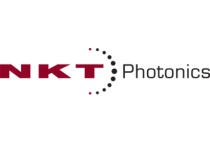Heat Meter Market by Type (Mechanical, Static), Connectivity (Wired, Wireless), End-User (Residential, Commercial & Public, Industrial) & Region - Global Forecast to 2023 - ResearchAndMarkets.com
The "Heat Meter Market by Type (Mechanical (Multi-Jet, Turbine), Static (Electromagnetic, Ultrasonic)), Connectivity (Wired, Wireless), End-User (Residential, Commercial & Public, Industrial) Region - Global Forecast to 2023" report has been added to ResearchAndMarkets.com's offering.
The global heat meter market is projected to reach USD 1,218.9 million by 2023, from an estimated USD 849.1 million in 2018, at a CAGR of 7.50%.
This growth can be attributed to factors such as the requirement for accurate measurement of heat consumption, legislative mandate to install heat meters, and increased savings through heat conservation. However, increasing competition from alternative heating technologies and capital cost associated with heat meter operations could act as restraints for the market.
The static segment held the largest market share in 2017 and is estimated to be the fastest growing segment during the forecast period. Static meters use fluidic oscillator principle for providing reliable flow and energy readings. Static meters are available in a wide range of flow rates, which are used in building technology and automation and in district heating.
The wired heat meters segment is expected to hold the largest market share during the forecast period because of the increased adoption of wired meters in poor connectivity areas where residential dwellings are connected with district heating. The Asia Pacific market is expected to hold the largest market for wired heat meters with rapid adoption in countries such as China and Japan. Europe region is expected to be the fastest growing market for wired connection during the forecast period.
The residential heat meter segment held the largest market share in 2017 and is estimated to be the fastest growing segment during the forecast period. These heat meters have witnessed a large-scale adoption in the residential sector, which includes large multifamily buildings, luxury apartments, and single-family homes. Increasing consumer awareness and growing installation of heat meter have empowered residents to have control over their energy consumption.
The European region is expected to be the second largest market for heat meters by 2023 and is projected to grow at the highest CAGR of 8.16% during the forecast period. The heat meters market in this region is mainly driven by the increasing focus on improving energy efficiency for ensuring secured energy supply, a rise in demand for space cooling systems, and the mandates for the reduction of GHG emissions. Targets set by the EU to achieve EU's 20-20-20 goals (20% increase in energy efficiency, 20% reduction of CO2 emissions, and 20% renewables by 2020) are expected increase heat meter installation in respective user premises.
The global heat meters market is dominated by a few major players that have a wide regional presence. The leading players in the heat meters market are Siemens (Germany), Diehl (Germany), Danfoss (Denmark), Kamstrup (Denmark), and Wasion Group (China)
Key Topics Covered:
1 Introduction
2 Research Methodology
3 Executive Summary
4 Premium Insights
5 Market Overview
6 Heat Meter Market, By Type
7 Heat Meter Market, By Connectivity
8 Heat Meter Market, By End-User
9 Heat Meter Market, By Region
10 Competitive Landscape
11 Company Profiles
- Danfoss
- Diehl
- Elster
- Engelmann
- Ista
- Itron
- Kamstrup
- Landis+Gyr
- Qundis
- Sensus (Xylem)
- Siemens
- Sontex
- Wasion Group
- Zenner
For more information about this report visit https://www.researchandmarkets.com/research/klccb6/heat_meter_market?w=4
View source version on businesswire.com: https://www.businesswire.com/news/home/20181012005289/en/



